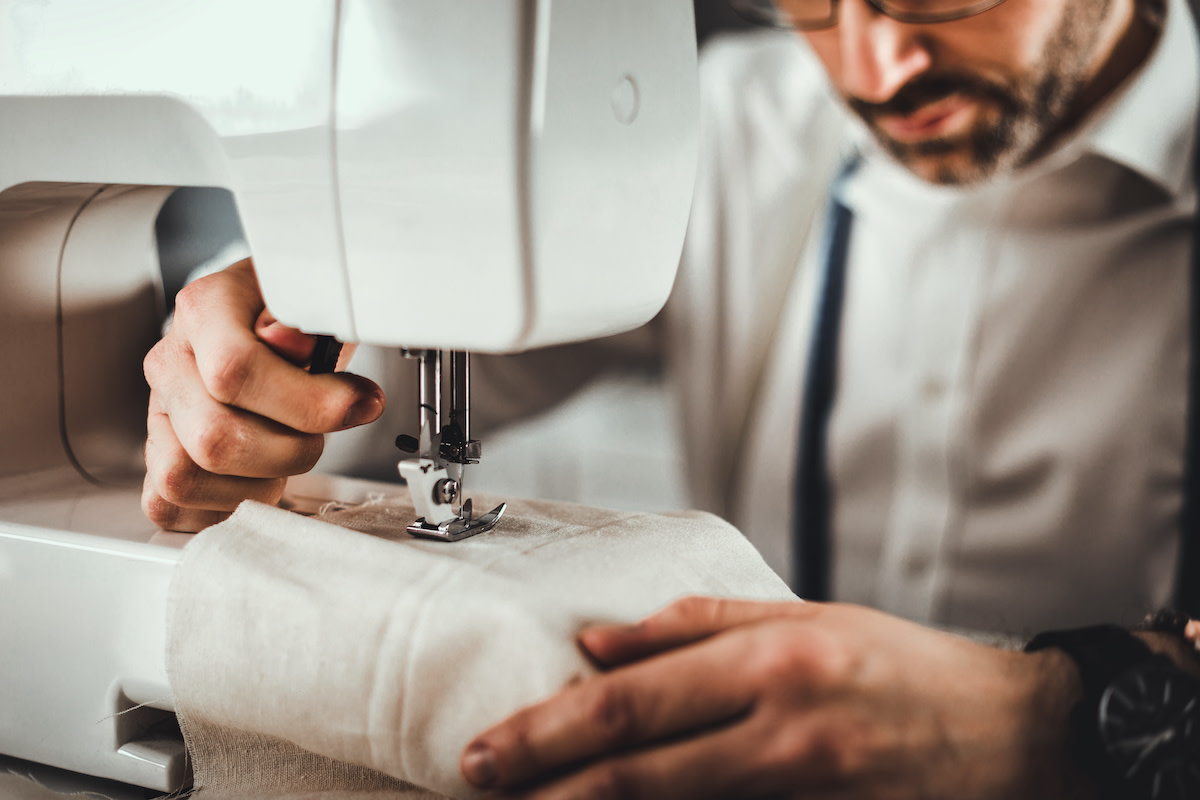How to Sew Stretchy Fabric: Types of Stretch Fabrics
Written by MasterClass
Last updated: Apr 7, 2022 • 4 min read
If you're new to the sewing machine, sewing stretch fabrics may seem intimidating. However, learning how to sew stretch fabric is just a matter of gaining the proper know-how and practicing diligently. Read on for a list of sewing techniques that will enable you to make a range of clothing items from stretchy materials.
Learn From the Best
8 Types of Stretch Fabrics
Stretch fabric typically contains some amount of elastane (a synthetic stretchy fiber), and it is popular in garment production. It can stretch and shrink back to its original shape and is also comfortable to wear. If you’re seeking out a stretch material to use for your next sewing project, here are some of the most popular choices:
- 1. Knit fabrics: Sewers often use these two-way stretch fabrics—which stretch in one direction (lengthwise or crosswise), but not both—to construct rib knit sweaters and tank tops. One of the most popular knits is lightweight, breathable jersey knit, a common choice for making T-shirts.
- 2. Neoprene: Neoprene is a thick, stretchy fabric made from synthetic fibers. Due to its high compression, neoprene is a popular choice for making wetsuits and scuba gear. Beginner sewers should opt for textiles of lighter thicknesses because this synthetic fabric may be difficult to get a regular sewing machine needle through without proper know-how.
- 3. Spandex: With its high elastane content, spandex is the most popular type of stretch fabric. It’s a standard choice for high-performance activewear because it can stretch up to five times its original size.
- 4. Spandex blends: Spandex blends feature a combination of synthetic (like nylon or rayon) and natural fibers (like cotton) and spandex for textural contrast without sacrificing stretch. Nylon spandex or cotton poplin are standard choices for swimsuits and sportswear. Rayon spandex is a popular choice to make form-fitting dresses with an elegant drape.
- 5. Stretch denim: In contrast to classic denim—which is crisp and stiff—stretch denim has plenty of give, allowing it to expand easily to fit the curves of the body. It has a four-way stretch, which stretches both horizontally and vertically.
- 6. Stretch lace: This stretchy form of lace is a common fabric choice for women’s lingerie, dresses, skirts, and leggings.
- 7. Stretch satin: Classic satin has very little give, but the stretch version expands to make comfortable evening wear and blouses that fall gracefully on the wearer’s body.
- 8. Stretch velvet: Like stretch denim, stretch velvet is a four-way stretch fabric, giving it lots of give, and making it a popular choice for high-movement garments like dancewear pieces.
How to Sew Stretchy Fabric
Sewing stretchy fabrics can be difficult initially, but learning to work with these versatile textiles opens up many garment-making possibilities. Follow these tips to learn how to sew stretch fabric with ease.
- 1. Choose the right needle and thread. Load your sewing machine with either stretch or ballpoint needles when working with elastic fabrics because they are more suitable for these materials than universal needles. Either type will work, but stretch needles are the best choice for highly elastic fabrics like pure spandex. Instead of using basic cotton thread (which has little give and can cause your fabric to bunch), opt for polyester thread; it has more stretch and will create smoother seams.
- 2. Use an appropriate stitch. When sewing stretch fabrics, opt for a narrow zig-zag stitch or stretch stitch (both allow your fabrics to expand slightly further than usual) rather than a classic straight stitch (which doesn’t encourage stretch, unless you use a double or twin needle to make it). Using an overlock or serger machine—which creates an expanding looped stitch perfect for finishing stretchy fabrics—also makes clean hems without sacrificing stretch.
- 3. Keep the fabric flat. Extra-flexible stretch fabric can expand as you sew it, making for bunched hems or inaccurate measurements. Lay your piece of fabric flat on your chosen surface as you work with it, whether you’re measuring out pattern pieces or sewing hems. Do not let the sides of the fabric fall off the edge of the table, as this can interfere with the accuracy of your measurements or stitches. Keep in mind that the edges of stretch fabric tend to coil inwards after cutting, but hemming it properly can prevent that. To do this, fold the fabric (with the appropriate seam allowance) inwards once or twice, press with an iron, and sew the hem as you typically would.
- 4. Preshrink your fabric. As you would while working with any other fabric, prewash your stretchy textiles before cutting and sewing them. Running your fabric through a wash cycle and hanging it out to dry prevents shrinking later on.
- 5. Replace or adjust the presser foot. Make sure to accurately adjust the pressure of your presser foot—the sewing machine attachment that holds the fabric in place—so that your fabric doesn’t stretch as you work. Alternatively, replace it with a walking foot attachment, which allows for extra feed to keep the material from stretching.
- 6. Practice when possible. It takes time for beginner sewers to get used to working with stretch fabric. When taking on a new project using stretchy fabric, notice which variables—like needles, attachments, sewing patterns, fabrics, stitch length, and stitch width—work well together and which don’t. Before you know it, you’ll have the experience to make some of your favorite new pieces.
Want to Learn More About Fashion Design?
Become a better fashion designer with the MasterClass Annual Membership. Gain access to exclusive video lessons taught by the world’s best, including Laura Kim and Fernando Garcia, Diane von Furstenberg, Marc Jacobs, Tan France, Anna Wintour, and more.
